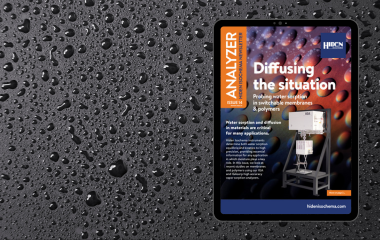5 Instrument Restart Tips
Following the festive season, we run through five tips to help ensure that your sorption instrument is in shape.
1. Time to warm up
If the instrument has been shut down over the holiday period, make sure you allow sufficient time for the thermostatted cabinet, and the balance in gravimetric systems, to stabilize before starting any measurements. This is important as the measurement accuracy depends on the thermal stability of these critical components.
2. Has the system been open to atmosphere?
If a gas or vapor sorption system has been open to atmosphere for an extended period of time, it is beneficial to evacuate or purge it before running an experiment, in order to remove residual atmospheric moisture from the system. Next time, why not consider leaving the system filled with 1 bar of an inert gas?
3. Is everything turned on?
It may sound obvious, but please do check that all accessories are turned on and the reported readings are as expected. A high proportion of pressurization problems reported after a shutdown are solved by simply checking that the gas supply is turned on and the regulator is set to an appropriate pressure.
4. New year, new experiment
If starting a new type of measurement, when loading a new sample, be sure to check that all of the information regarding your new experiment is correctly entered in the software.
5. Run a blank or standard sample
To check the validity of data recorded, it is good practice to run a ‘blank’ or standard sample at regular intervals. After a shutdown is an ideal time to do this and gives confidence in the data measured in the coming weeks and months.
For further advice or to receive a quotation for training or maintenance, please contact our service team.


